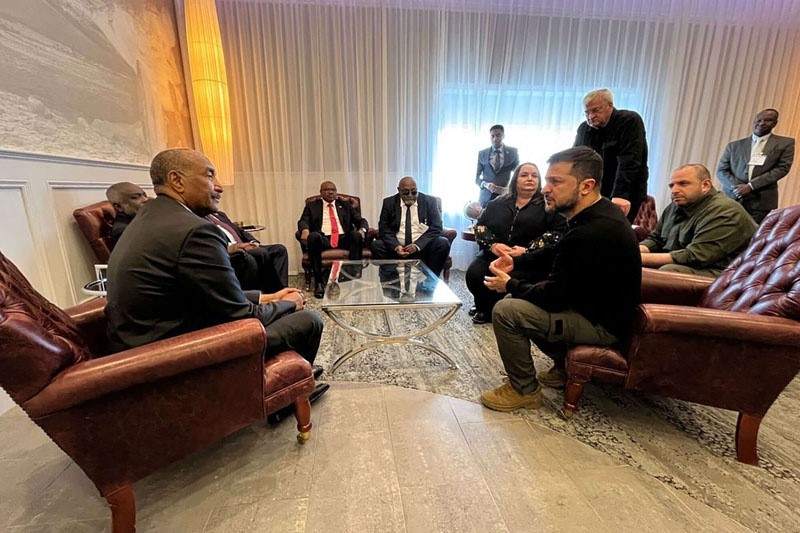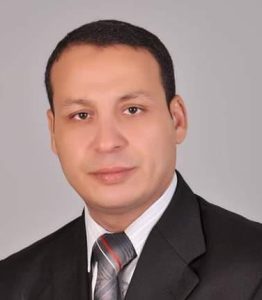The meeting between Ukrainian President Volodymyr Zelensky and Sudanese Army Commander Abdel Fattah al-Burhan is taking place amidst escalating military tensions between the Russian and Ukrainian armies. Concurrently, there is a growing surge in military clashes between the Sudanese army and the Rapid Support Forces. Both leaders have expressed a mutual desire to bolster military and political coordination as a countermeasure against Moscow. Their plan involves intensifying military strikes on Wagner Group positions and Rapid Support Forces locations. It appears that Kyiv is ready to offer technical and logistical support to the Sudanese army in their fight against the Rapid Support Forces. Kyiv’s strategic aim is to shift the battlefield to the African theater, with Sudan being a central focus. In contrast, the Sudanese army is actively seeking Western support for their military operations against the Rapid Support Forces, all the while shedding light on Russian activities within Sudan.
The unexpected meeting between Ukrainian President Volodymyr Zelensky and Sudanese Army Commander Abdel Fattah al-Burhan occurred on September 23rd this year at Shannon Airport in Ireland, as reported by various Arab and Western media outlets. The spontaneous nature of this meeting prompts questions about the evolving relationship between the Sudanese Army and Ukraine.
Growing Relations
The meeting between Ukrainian President Volodymyr Zelensky and the head of the Sovereignty Council and Sudanese Army Commander, Abdel Fattah al-Burhan, takes place against the backdrop of shared interests in political coordination to address the Russian presence. This includes:
- Ukraine offering technical military support to the Sudanese Air Force: On August 19th, a Ukrainian military delegation visited the Wadi Seidna military base in Omdurman to conduct essential maintenance work on Sudanese Air Force fighter jets. Many observers interpreted this as Ukraine’s commitment to providing military support to the Sudanese Army, aiming to enhance the capabilities of the Sudanese Air Force in countering the Rapid Support Forces, which lack aircraft but possess weapons and tanks. Some see Ukraine’s support as indirect involvement in the ongoing conflict between the Sudanese Army and the Rapid Support Forces, effectively siding with one party (the Sudanese Army) against the other (the Rapid Support Forces).
- Deployment of Ukrainian drones in confrontations between the Sudanese Army and the Rapid Support Forces: Reports from the United States on September 20th suggested that Ukrainian special forces might be responsible for a series of attacks targeting the Rapid Support Forces. CNN, an American network, cited Ukrainian military leaders who hinted at the “non-Sudanese” nature of the targeting operation. The channel pointed out that while it couldn’t independently confirm Ukraine’s involvement in these strikes, video footage showed that the drone attacks on the Rapid Support Forces in Omdurman and its vicinity followed a pattern similar to that used by Ukraine against Russia. These drones demonstrated exceptional accuracy in hitting their targets, which is an unconventional combat tactic in Sudan and Africa, raising the possibility that Ukraine may have provided assistance to the Sudanese Army in dealing with the Rapid Support Forces.
- Reciprocal International Political Support between Ukraine and the Sudanese Army: Ukraine has consistently voiced its backing for the Sudanese Army in its conflict with the Rapid Support Forces. Conversely, Sudan has shown its solidarity with Ukraine, especially in United Nations votes denouncing the Russian-Ukrainian war. The timing of this meeting underscores the shared objective of both parties to underscore their political support for one another. This includes the head of the Sudanese Sovereignty Council showing solidarity with his country’s stance in the ongoing war with Russia, as well as the Ukrainian President offering support to the Sudanese Army in its battle against the Rapid Support Forces.
Multiple Dimensions of the Meeting
The meeting between Zelensky and al-Burhan can be understood within the framework of the ongoing conflicts in both Ukraine and Sudan, as outlined below:
- Expanding Ukraine’s Theater of War to Include Sudan: Ukrainian military delegations’ movements and visits to Sudan reflect Kyiv’s aspiration to broaden the scope of its conflict to encompass Sudan. The objective is to divert Russian efforts towards multiple fronts. Given that the primary Russian-Ukrainian war is occurring within Ukrainian borders, Ukraine’s capacity for military responses is somewhat constrained. Ukraine seems to seek an expansion of its military actions in response to Russian attacks, extending beyond Russian territory to engage in other regions and theaters.
- Targeting the Wagner Group and the Rapid Support Forces in Sudan: While Ukraine endeavors to counter the Wagner Group within Ukrainian territory, the Sudanese Army is actively working to expel the Wagner Group from Sudan. This is essential because the Rapid Support Forces rely significantly on the support of this military group in Sudan. Simultaneously, Kyiv suspects that Moscow depends on financial backing provided by the Rapid Support Forces and the activities of the Wagner Group, particularly in gold extraction and trade in Sudan. Ukraine’s aim is to disrupt these supply lines to Moscow. Consequently, it appears that this military coordination between Ukraine and the Sudanese Army is primarily aimed at undermining the operations and presence of the Wagner Group and isolating it within Sudan.
- Applying Political Pressure on Hemeti, the Leader of the Rapid Support Forces: Despite the ongoing conflict between the Sudanese Army and the Rapid Support Forces, Abdel Fattah al-Burhan, the head of the Sudanese Sovereignty Council, has consistently expressed his desire to engage in negotiations with the Rapid Support Forces. This suggests that these intensive international efforts may be aimed at compelling the leader of the Rapid Support Forces to come to the negotiation table, particularly in light of the conditions set by Hemeti for initiating talks with the Sudanese Army.
- Mobilizing International Support for the Sudanese Army against the Rapid Support Forces: Observers highlight that the meeting between Abdel Fattah al-Burhan and Zelensky at this juncture reflects the Sudanese Army leader’s intent to garner Western support for his position in the conflict with the Rapid Support Forces. This is achieved by showcasing his solidarity with the Ukrainian stance in the conflict with Russia. Western powers, including the United States, have voiced criticisms and expressed concerns about the implications of the ongoing conflict on their interests in Sudan, and they have called for an end to the hostilities. Simultaneously, Western nations are disconcerted by the presence of Wagner Group forces in Sudan, perceiving it as a threat to their interests in the country.
Mobile Geopolitics
In essence, Zelensky’s meeting with al-Burhan signifies a growing level of military and political coordination and collaboration in response to Russian policies. It is apparent that both leaders share an understanding of the necessity to address these policies through joint military efforts, specifically by launching military strikes against the Wagner Group. This group has members engaged in the conflict in Ukraine and is also involved in combat alongside the Rapid Support Forces in Sudan. This military coordination aligns with the interests and objectives of both the Sudanese and Ukrainian armies in confronting a common adversary on the Sudanese stage.
However, the expanded involvement of Ukrainian military forces in Sudan may potentially result in increased Russian support for the Wagner Group and the Rapid Support Forces in Sudan. This could, in turn, draw the attention of other international powers to broaden their engagements in Sudan. This scenario hints at the possibility that the Russian-Ukrainian conflict is gradually shifting to the African arena, with its geographical scope expanding day by day to encompass new countries.


